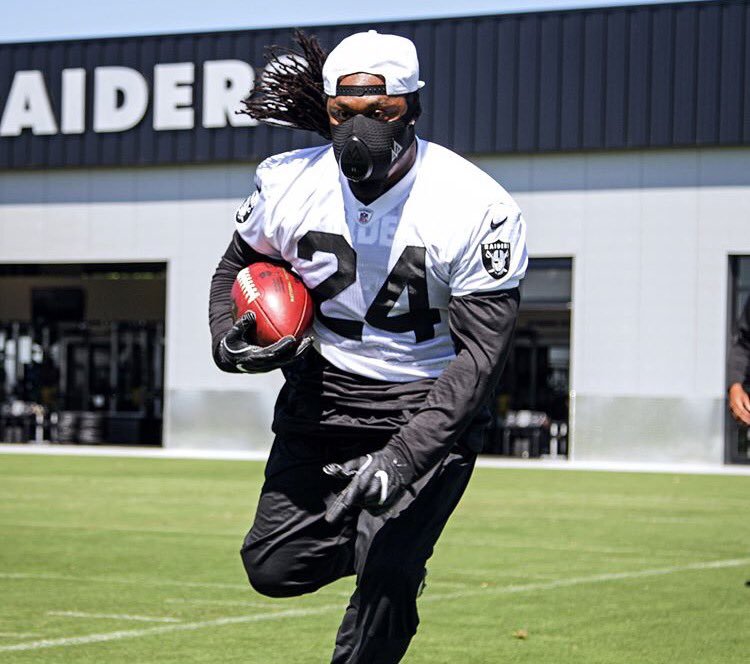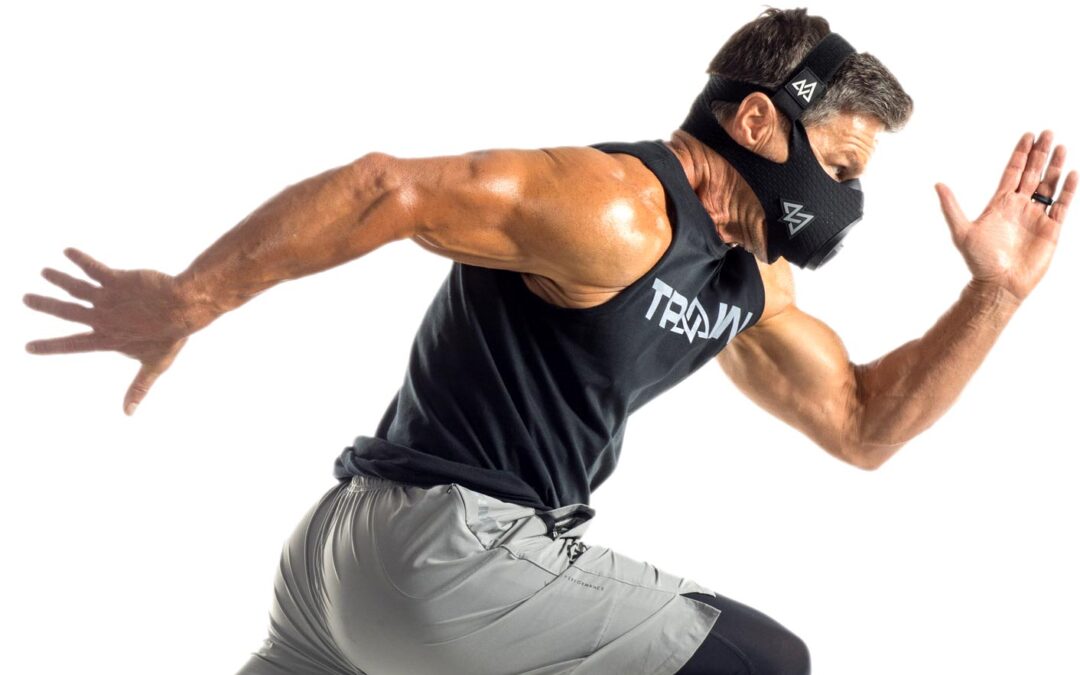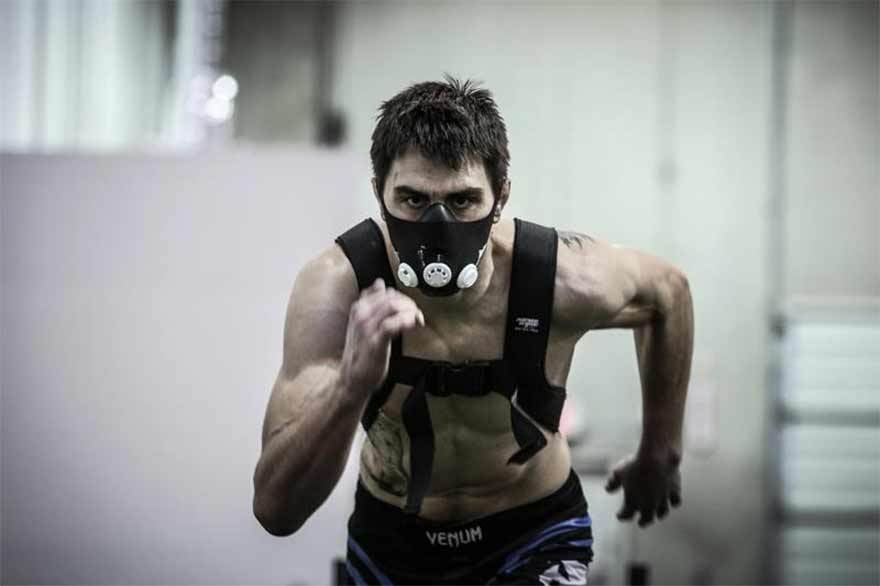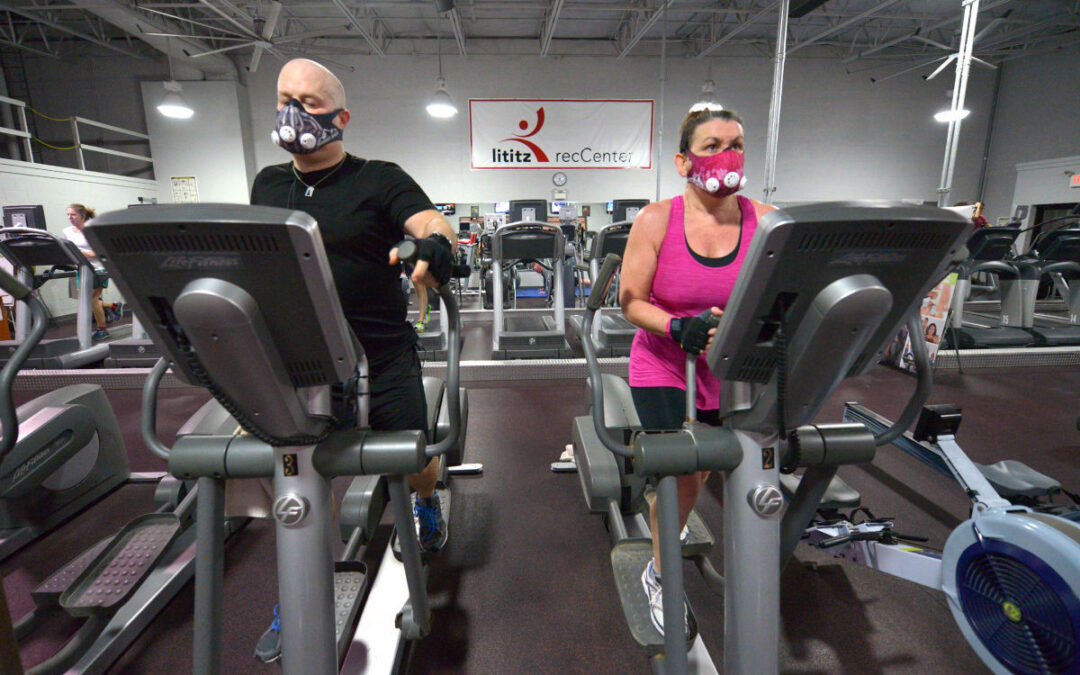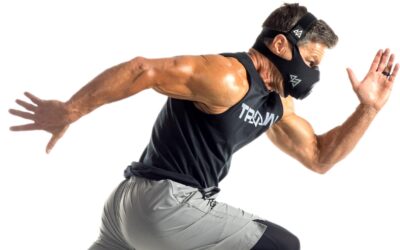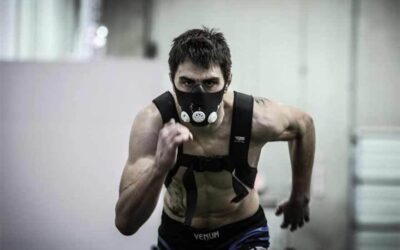You may have seen some of your favorite NFL players training with Training Mask or wearing them in their pre-game on-field preparations. NFL stars are notorious for taking their training the extra mile, no matter how difficult the challenge may be. This is how they stay in peak performance.
Some of the key features that make a great football player are power, stamina, endurance and just a great all-round conditioning. Some of these athletes can weigh as much as 300 pounds and can run 50 meters in under 5 seconds. This kind of performance requires super explosive power and an impressive physically conditioned body.
Throughout an average game these players go from zero to pure sprint and max exertion from the first snap all the way to the final play in the 4th quarter. Every play the are tapping into this explosive power. This required great endurance as well as an impressive stamina.
At the very foundation of a great football player there is a strong core and backed up by a super strong respiratory system. Nowadays the number of football players, professional or amateur, who use the Training Mask as a tool to support their workouts and build a better physique is rising and there is a simple reason for that – it works! And trust me, even if it looks cool, it doesn’t feel cool at all when you are training.
Air resistance sprint training
When training for football, you often see drills focused around sprinting and explosive movements.
The purpose of this kind of training that we lay out below is to develop your cardiovascular capacity as well as your respiratory muscles. Using just a mild air resistance will force your lungs as well as your diaphragm to grow stronger and become more efficient at breathing.
This can be done 3 to 4 times per week before or after your strength training, or any other specific type of training that you are doing.
Warm up
- 800-1200 meters of light jogging
- 10 to 15 minutes of stretching and light bodyweight exercises such as squatting, lunges, pull-ups and push-ups.
Workout
Phase 1
- 3 sets of 10 meters, maximum effort sprints from a 3 point stance. Resting time between sets should be around 1 minute (Training Mask is off)
- 10 sets of 10 meters, maximum effort sprints from a 3 point stance. Resting time between sets should be around 30 seconds (Training Mask is on). Use an air resistance setting of 6x–9x.
- Rest for up to 3 minutes while keeping the Training Mask on for the 1st minute and take it off for the next 2 minutes
Phase 2
- 3 sets of 20 meters, maximum effort sprints from a 3 point stance. Resting time between sets should be around 1 minute (Training Mask is off)
- 10 sets of 20 meters, maximum effort sprints from a 3 point stance. Resting time between sets should be around 30 seconds (Training Mask is on). Use an air resistance setting of 3x-6x.
- Rest for up to 3 minutes while keeping the Training Mask on for the 1st minute and take it off for the next 2 minutes
Phase 3
- 3 sets of 60 meters, maximum effort sprints from a 2 point stance. Resting time between sets should be around 3 minutes (Training Mask is off)
- 10 sets of 60 meters, maximum effort sprints from a 2 point stance. Resting time between sets should be around 30 seconds (Training Mask is on). Use an air resistance setting of 3x-6x.
- Rest for up to 3 minutes while keeping the Training Mask on for the 1st minute and take it off for the next 2 minutes
The longer sprints will be difficult to complete, and your first instinct might be to just stop running and take the Training Mask off. If you manage to resist it and push through your workout you will be able to “connect” with your breathing or become more aware of the way you breath, and learn how to peace your respiration.
The main outcomes of following this routine will be a better endurance and better stamina, which will definitely help you in the next season.


